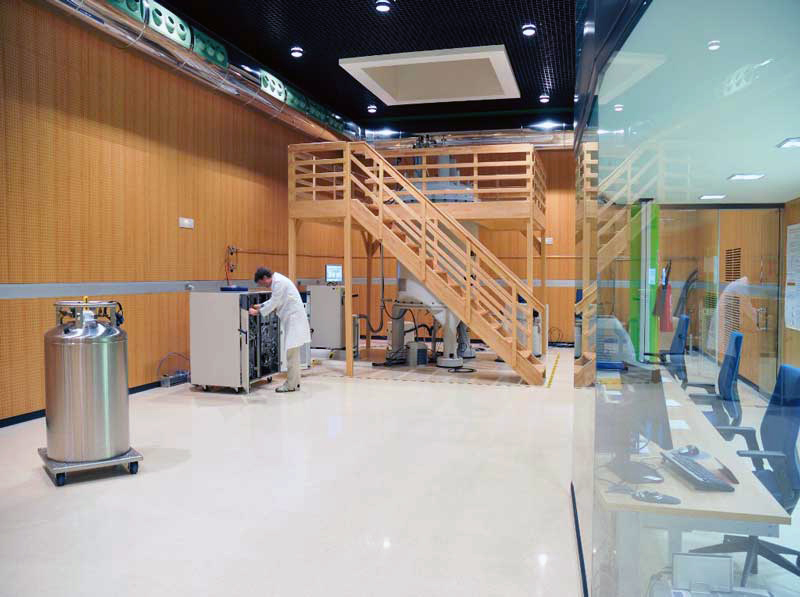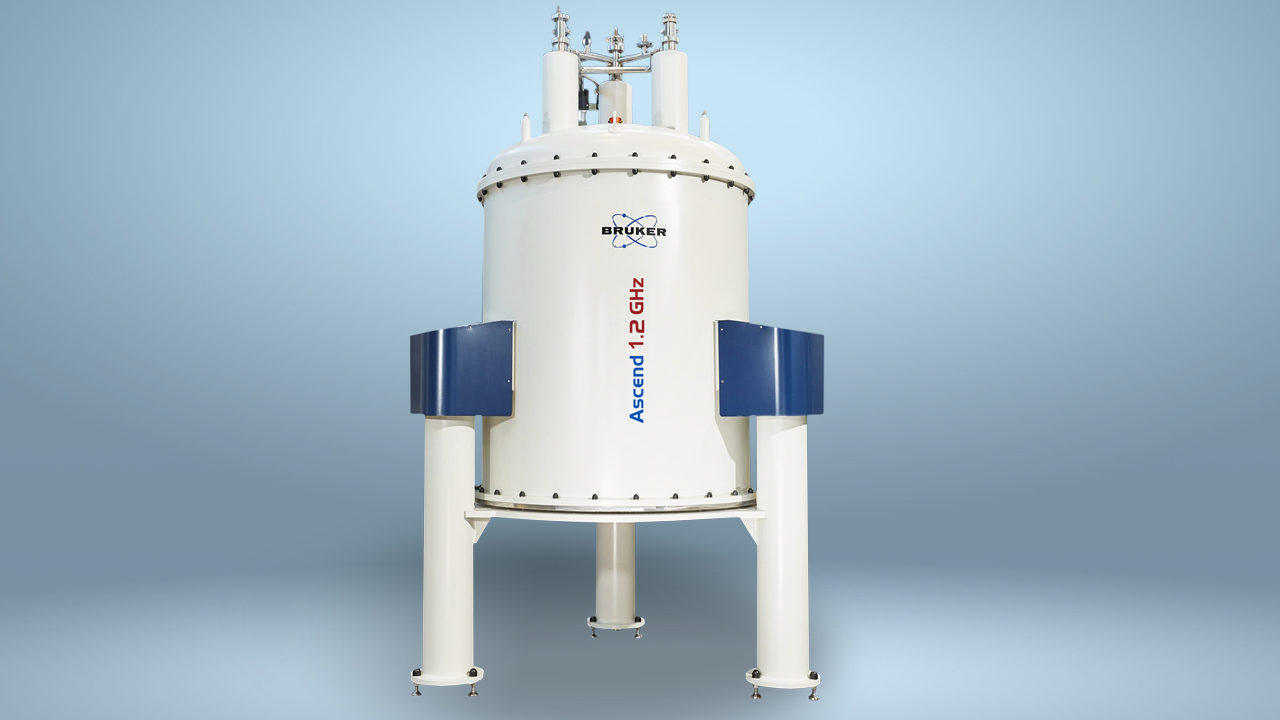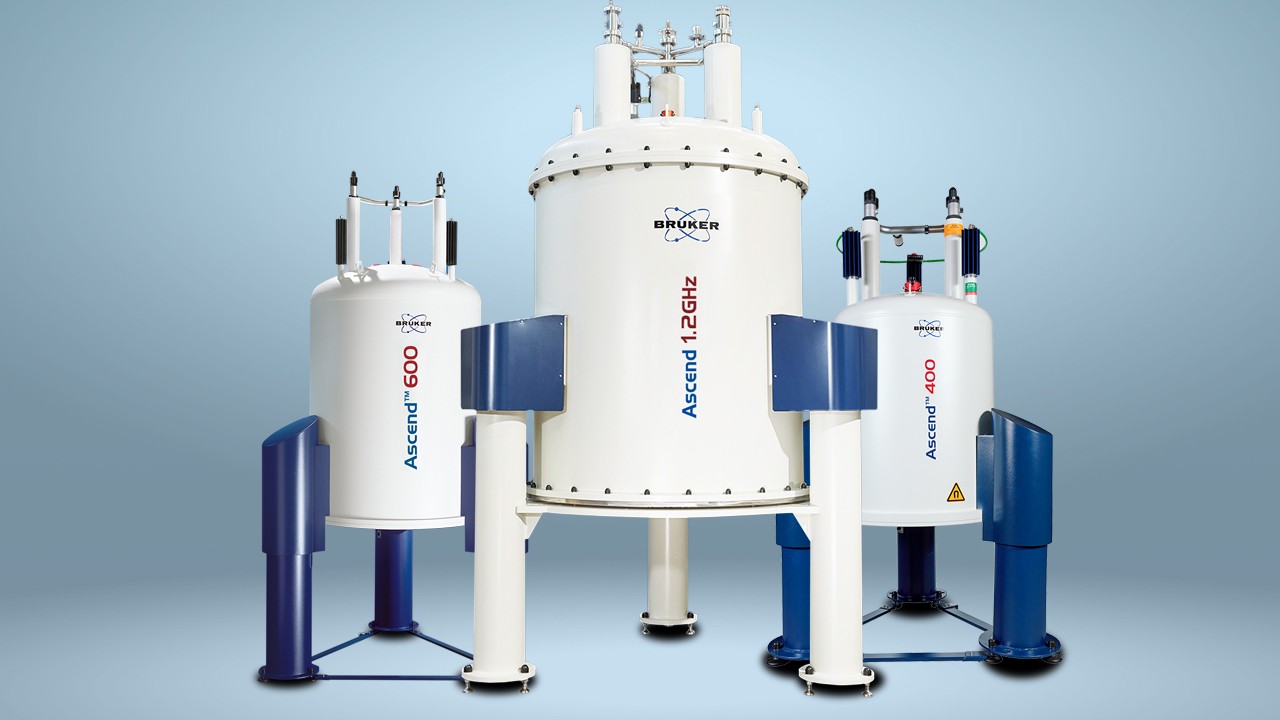

Using NMR spectroscopy to drive personalized medicine
A team of researchers at CIC bioGUNE, Spain, is using NMR spectroscopy to advance understanding of metabolic syndrome and develop improved therapeutics
Metabolic syndrome (MetS) is a worldwide epidemic that is affecting one in three adults.1 Individuals with MetS are more susceptible to other conditions, ranging from asthma and polycystic ovary syndrome to fatty liver and cancers of the prostate, pancreas, and breast.2 It can also lead to strokes and kidney disease.
Research has shown that, as of 2020, there were an estimated 2.5 million children and 35.5 million adolescents living with MetS3. As well as affecting quality of life for patients, this places a substantial burden on healthcare systems, and has serious socioeconomic implications that have been described as “A medical challenge for the whole research community.”4
Diagnosis is often determined by the presentation of at least three of the following: abdominal obesity (a waist measurement of 40+ inches for men and 35 inches for women), high blood sugar (plasma glucose 100mg/dL or more), high serum triglycerides (TG conc. 150mg/dL or more) and low high-density lipoprotein cholesterol (HDL-Cholesterol less than 40mg/dL for men, 50mg/dL or less for women). Yet historically, one of the challenges around diagnosis has been a lack of consensus in the medical communities about a definition of the condition. A joint statement by several bodies, including the International Diabetes Federation and the American Heart Association, recognized that, although waist circumference is an important signifier of MetS, this does not account for differences in sex and across ethnic groups.5
Hernandez-Baixauli et al. highlighted that traditional molecular markers are not precise enough to detect the disease at earlier stages – crucial if the causes are to be understood and if prevention or mitigation is to be a possibility: “There is a need to obtain novel molecular markers of pre-disease stages. At present, the lack of robust health status biomarkers for the principal clusters of MetS and obesity is a bottleneck that slows down the personalized nutrition in metabolomics. 6
The exposure of each risk factor can be detected by traditional molecular markers, but the current biomarkers have not been enough precise to detect the primary stages of disease. Thus, there is a need to obtain novel molecular markers of pre-disease stages. 6
Dr. Óscar Millet, Principal Investigator at the CIC bioGUNE in Bizkaia, Spain, has been researching MetS for many years, and is trying to determine biomarkers of the disease that can be characterized much earlier – which could have significant impact from a clinical perspective. “With an independent measurement of the effect of various interventions on your risk of MetS – more exercise, or changing your diet, for example – clinicians can give a much clearer prognosis, and could even reverse MetS,” he says.
Investigating the metabolome
CIC bioGUNE, where Dr. Millet is based, is a research facility focusing on the molecular bases and mechanisms of disease with the goals of creating improved diagnostic methods and promoting more effective therapies. Dr. Millet’s team has conducted extensive research within the field of metabolomics, specifically in the development of personalized medicine. His focus is on applying the metabolic action to help understand the mechanism of disease and rare diseases.
“Personalized or precision medicine introduces a new paradigm that tries to understand people at the micro level,” Dr. Millet says. “MetS is a serious burden, particularly for Western societies, and my aim is to obtain metabolomic information to predict the outcome of this disease at every stage. In essence, we are trying to detect biomarkers of the disease that may help not just to cure the disease, but to prevent it.”
Dr. Millet’s metabolomic research involves the measurements of serum and urine samples from large cohorts of people at different stages of the disease and comparing those to the available medical data. “Our goal is to use the samples in order to create a NMR metabolic model, which will allow us to predict the real risk of having, for example, diabetes, based only on metabolic information,” he adds.
The research team has established a cohort of 15,000 people and has collected more than 90,000 samples in the local biobank. Dr Millet explains: “The size of the cohort demonstrates both the scale of the problem and the magnitude of our project.” He believes the accurate characterization of early biomarkers, rather than a reliance on later-stage diagnostics, could move us closer to personalized medicine.
“It is important that we establish connections at a molecular level,” he says. “Currently, if a person is already obese, there are likely to be medical interventions to help them control their weight, for example. But how do we know whether we are also controlling their propensity for diabetes, or hypertension, or dyslipidemia? We need to be able to determine which molecules are important within the pathophysiological process.”
Dr. Millet analyzes samples using nuclear magnetic resonance (NMR), “My research interest has always been in NMR spectroscopy,” he says. “It can be applied at different levels in the characterization of biomarkers for disease, and also in the evaluation of the prognosis of the disease by analyzing different samples throughout disease progression.”
NMR: a reproducibility exemplar
NMR spectroscopy has proven to be an important analytical technique in the field of metabolomics. Its reproducibility, quantitative abilities, and ability to identify metabolites in complex mixtures has made it a key driver in the advances of metabolomics and other scientific areas.6
“NMR is an excellent and extremely versatile analytical technique as it is robust, reliable, and non-destructive, and its quantitative capabilities offer high coverage and low detection limits,” says Dr Millet. “In the analysis of biofluids there is less sensitivity but, because the metabolism measured is statistically significant, the data is very high quality.”
One of the major advantages of using NMR spectroscopy is its reproducibility. “NMR is both intra- and inter-reproducible, unlike LC-MS or GC-MS which don’t have internal interoperability,” Dr. Millet says. “The Bruker IVDr platform we are using allows us to quantify automatically metabolites in a single acquisition, and these measurements are exactly the same in lab in Germany, or lab in Australia for example.”
Being able to analyze a large cohort of samples is important when validating complex biological samples. Dr. Millet explains: “You are grasping all the possible complexity in all cohorts, and therefore anything you see will be significant – the large number of samples adds meaning to the measurements of the metabolism,” he adds.
The large-scale studies that Dr. Millet’s methods facilitate are also important because they allow the detection of biomarkers relevant to subgroups of people. Madhusoodanan highlighted how traditional biomarkers are not accurate predictors of MetS in women, and among people of color globally – an obstacle that needs to be overcome if clinical treatment is to become truly personalized.7
Hernandez-Baixauli et al. described NMR spectroscopy as a “promising” method for analyzing the metabolites associated with MetS in a reproducible and economically viable way.8 Dr. Millet’s view supports this: “NMR spectroscopy is a superb technique that can be applied to almost anything. I try to use NMR to answer any questions that I have. In our case, it has allowed us to create a predictive model for MetS to help analyze the large volumes of data generated through our research effectively.”
Towards a precision medicine paradigm
Bruzzone et al. described the aim of precision medicine as providing an individualized solution to health problems and stated that ‘omics’ technologies can help build “A suitable description of an individual’s specific characteristics to find personalized treatment for the cure of specific diseases.”9 They also consider metabolomics, which is sensitive to phenotypic alteration, as particularly suitable for personalized medicine.
Dr. Millet agrees, adding that NMR spectroscopic analysis brings us closer to the goal of characterizing early biomarkers for this purpose. “The beauty of NMR is its versatility and its ability to handle large data sets – crucial for our metabolomic work. Its high level of reproducibility and high quality of data are allowing us to determine biomarkers of disease, with the long-term aim of producing preventative therapies for those diseases,” he says. “In short, we are closer to taking our discoveries all the way to the clinic.”
Dr. Millet is interested in the concept of metabolic age, and in the future would like to map the markers of different diseases onto a metabolic age model. “Ageing is the most important risk factor for many diseases, and, in the metabolic space, analysis provides a lot of information on deviation causes,” he says. His goal is to create a large-scale model of characterization in the metabolic space that allows the prediction of whether a person is ‘ageing’ towards a certain disease.
“Our research up to now has shown that there are smaller, earlier signals for conditions such as MetS – so getting our methods fully validated and translated into the clinic, will take us towards more personalized medicine approaches, and a better quality of life for patients,” he says. “Essentially, using NMR spectroscopy is allowing us to take a step closer to the personalized precision medicine paradigm – it allows us to assess the patients of today, to protect the patients of the future.”
About Óscar Millet
Dr. Millet holds degrees in Chemistry (Univ. Ramon Llull,1994) and Chemical Engineering (IQS, 1995). After obtaining a Ph D in Organic Chemistry (University of Barcelona, 1999) he joined the group of Lewis Kay in Toronto for a post-doctoral stay (University of Toronto, 2000-2004). He was then recipient of a Ramon y Cajal reincorporation contract at the Parc Cientific de Barcelona (2004-2006) and he currently is group leader at the CIC bioGUNE. His research line focuses on the use of nuclear magnetic resonance (NMR) to the study of biologically relevant proteins and enzymes, paying special attention to the delicate balance existing between protein stability and dynamics. Such knowledge is applied for the development of new compounds with therapeutic activity, specifically in the field of rare diseases. He has published more than 55 papers with a total number of citations (1998-2015) of 2050 and an h-index of 17. He was the Spanish delegate for the trans domain of the COST program (2009-2014). He was awarded the prize of the Real Sociedad Española de Química (2004) and the Spanish NMR group prize (2005). He currently is the president of the Spanish NMR group.
About CIC bioGUNE
CIC bioGUNE, member of the Basque Research and Technology Alliance (BRTA), is a key research center within the national and international scientific landscape and has emerged as a knowledge source in the area of health science. The cutting-edge scientific activity of CIC bioGUNE researchers explores the interface between chemistry, structural, molecular and cell biology, with the aim of developing a more precise medicine for the future.
About Bruker Corporation
Bruker is enabling scientists to make breakthrough discoveries and develop new applications that improve the quality of human life. Bruker’s high-performance scientific instruments and high-value analytical and diagnostic solutions enable scientists to explore life and materials at molecular, cellular, and microscopic levels. In close cooperation with our customers, Bruker is enabling innovation, improved productivity, and customer success in life science molecular research, in applied and pharma applications, in microscopy and nano analysis, and in industrial applications, as well as in cell biology, preclinical imaging, clinical phenomics and proteomics research and clinical microbiology.
Bruker NMR Instruments are for research use only and not intended for Use in Clinical Diagnostic Procedures
References
- [1] Saklayen MG. The Global Epidemic of the Metabolic Syndrome. Curr. Hypertens. Rep. 2018; 20 (2):12. DOI: https://doi.org/10.1007/s11906-018-0812-z
- [1] Srikanthan K et al. Systematic Review of Metabolic Syndrome Biomarkers: A Panel for Early Detection, Management, and Risk Stratification in the West Virginian Population. Int. J. Med. Sci. 2016; 13 (1):25-38. https://doi.org/10.7150/ijms.13800
- [1] Noubiap JJ et al. Global, Regional and Country Estimates of Metabolic Syndrome Burden in Children and Adolescents in 2020: A Systematic Review and Modelling Analysis. Lancet. 2022; 6:3, 158-170. DOI: https://doi.org/10.1016/S2352-4642(21)00374-6
- [1] Huang, Y et al. The prevalence and characteristics of metabolic syndrome according to different definitions in China: a nationwide cross-sectional study, 2012–2015. BMC Public Health 22, 1869 (2022). DOI: https://doi.org/10.1186/s12889-022-14263-w
- [1] Alberti KG et al. Harmonizing the metabolic syndrome: a joint interim statement of the International Diabetes Federation Task Force on Epidemiology and Prevention; National Heart, Lung, and Blood Institute; American Heart Association; World Heart Federation; International Atherosclerosis Society; and International Association for the Study of Obesity. 2009; 120(16):1640-5. DOI: https://doi.org/10.1161/CIRCULATIONAHA.109.192644
- [1] Hernandez-Baixauli J, et al. Detection of Early Disease Risk Factors Associated with Metabolic Syndrome: A New Era with the NMR Metabolomics
- [1] Nagana Gowda GA, Raftery D. NMR-Based Metabolomics. Adv. Exp. Med. Biol. 2021;1280:19-37. DOI: https://doi.org/10.1007/978-3-030-51652-9_2
- [1] Madhusoodanan J. Searching for Better Biomarkers for Metabolic Syndrome, ACS Cent. Sci. 2022; 8:6, 682–685. DOI: https://doi.org/10.1021/acscentsci.2c00629
- [1] Bruzzone C et al. Metabolomics as a powerful tool for diagnostic, prognostic and drug intervention analysis in COVID-19. Front. Mol. Biosci. 2023; 10. DOI: https://doi.org/10.3389/fmolb.2023.1111482


